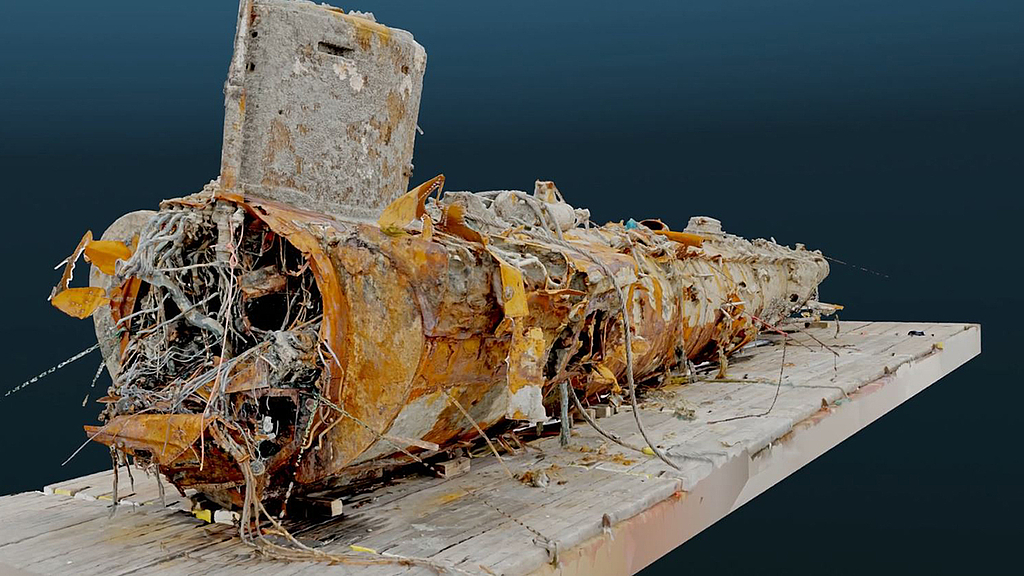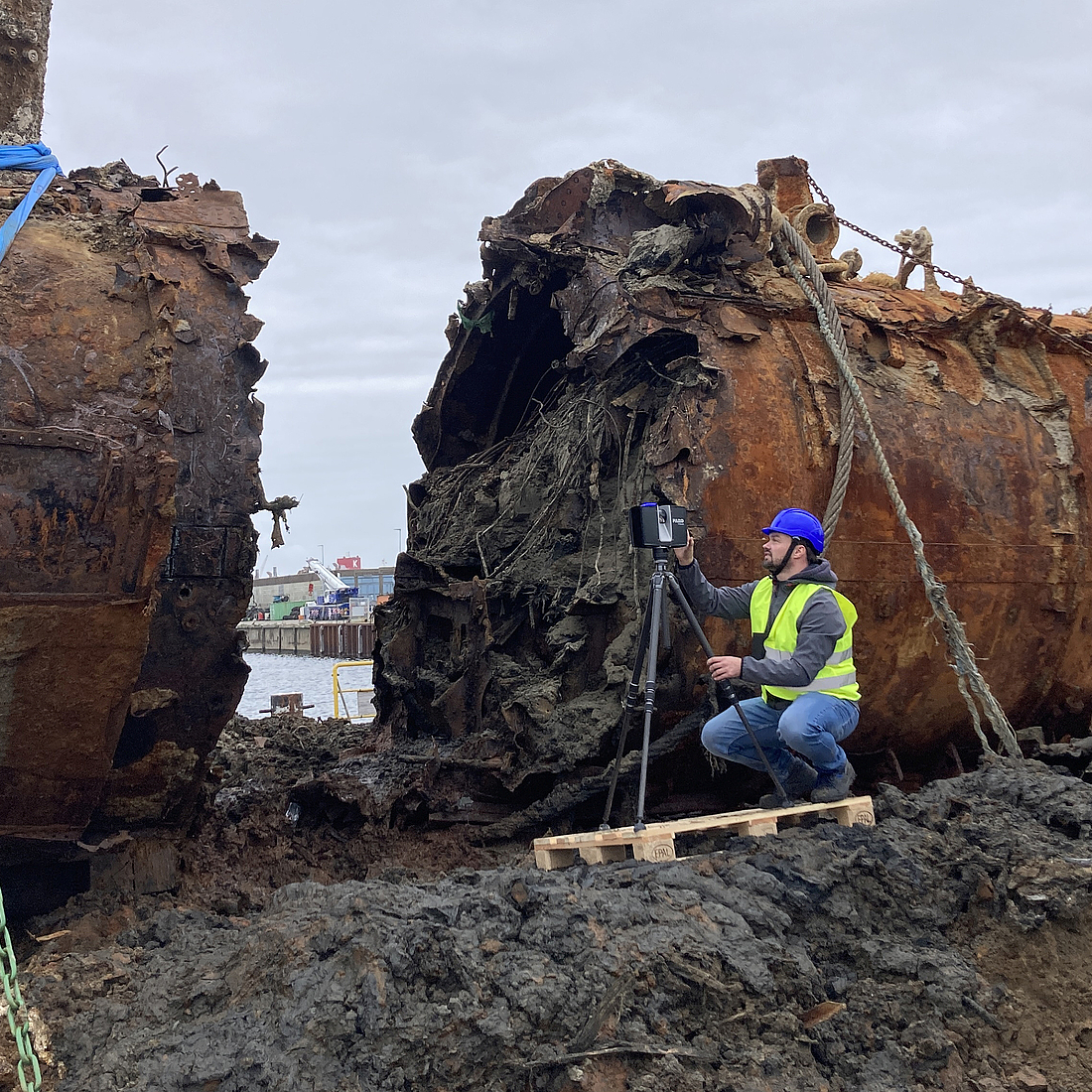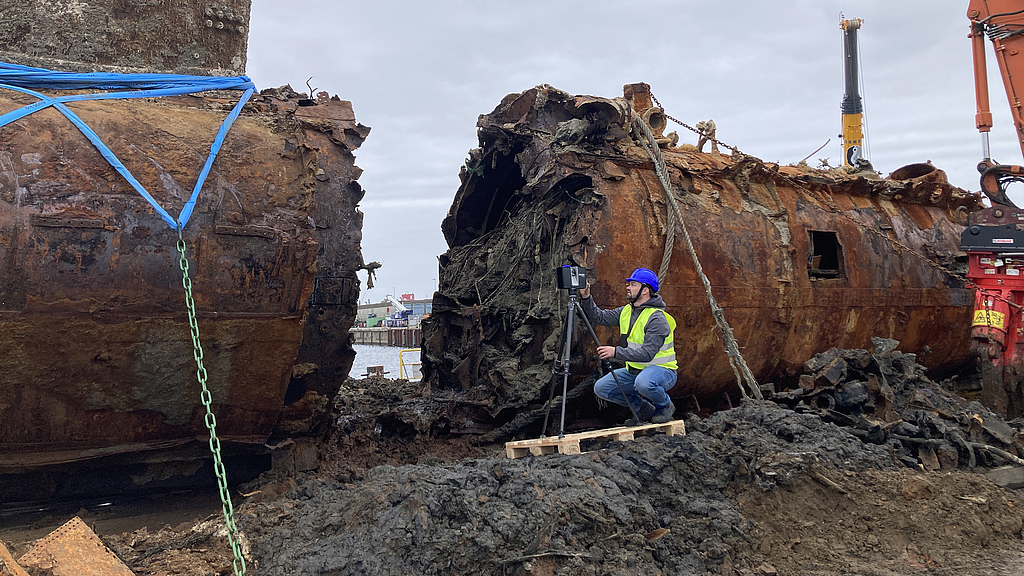Going digital with U16
A fragile, oversized tube was hoisted out of the North Sea off Cuxhaven in the summer. The find turned out to be the U16 submarine from the imperial era. The German Maritime Museum (DSM) / Leibniz Institute for Maritime History was immediately interested and is now bringing a piece of the submarine to Bremerhaven – thanks to the museum's digitization department.
Not particularly attractive at first glance, but on closer inspection an important artifact of maritime history: the recently salvaged submarine U16, a testament to the imperial era. Built in 1911 and sunk in 1919, it has been lying dormant on the North Sea seabed off Scharhörn, near Cuxhaven, ever since. The salvage operation itself was watched by the public. When the submarine broke apart in the process, experts engaged in intense debate.
The DSM has been following the salvage of U16 very closely from the outset, including the criticism expressed by archaeologists. As soon as the wreck was made accessible to the professional public in Cuxhaven, the DSM and its digitization team created a detailed digital 3D model of the entire submarine, including all recovered finds, using terrestrial laser scans and drone aerial photographs in accordance with scientific documentation standards.
This means that the submarine, which has now been dismantled into several physical fragments and is to be distributed among various museums, will remain virtually intact. The DSM is working closely with the state archaeology departments involved. A joint scientific conference for a more detailed analysis of the digital documentation and scientific publications on the subject are already being planned.
Using the example of U16, the DSM is testing new ways of digitally documenting large maritime objects – a forward-looking approach to research, exhibition, and knowledge transfer. Digital models enable resource-saving, sustainable preservation and communication of maritime cultural heritage.
The digital 3D model of U16 will soon be part of the DSM's exhibitions: A virtual reality tour will then allow visitors to experience the entire wreck immersively and in its original size. Special sub-objects will be visually highlighted and linked to further contextual information, creating intuitive, interactive access to a fascinating chapter in submarine history.
For this reason, the DSM has deliberately decided not to take possession of physical wreckage. Transporting and conserving objects weighing several tons would involve considerable financial, logistical, and personnel costs. Instead, the DSM is focusing on innovative digitization solutions that benefit both science and the public.
The DSM already has the SEEHUND micro-submarine, which will be on display in the Scharoun building in the future. The virtual experience of U16 now complements this collection in an innovative way.

3D scan of the U16 submarine. Scan: DSM


